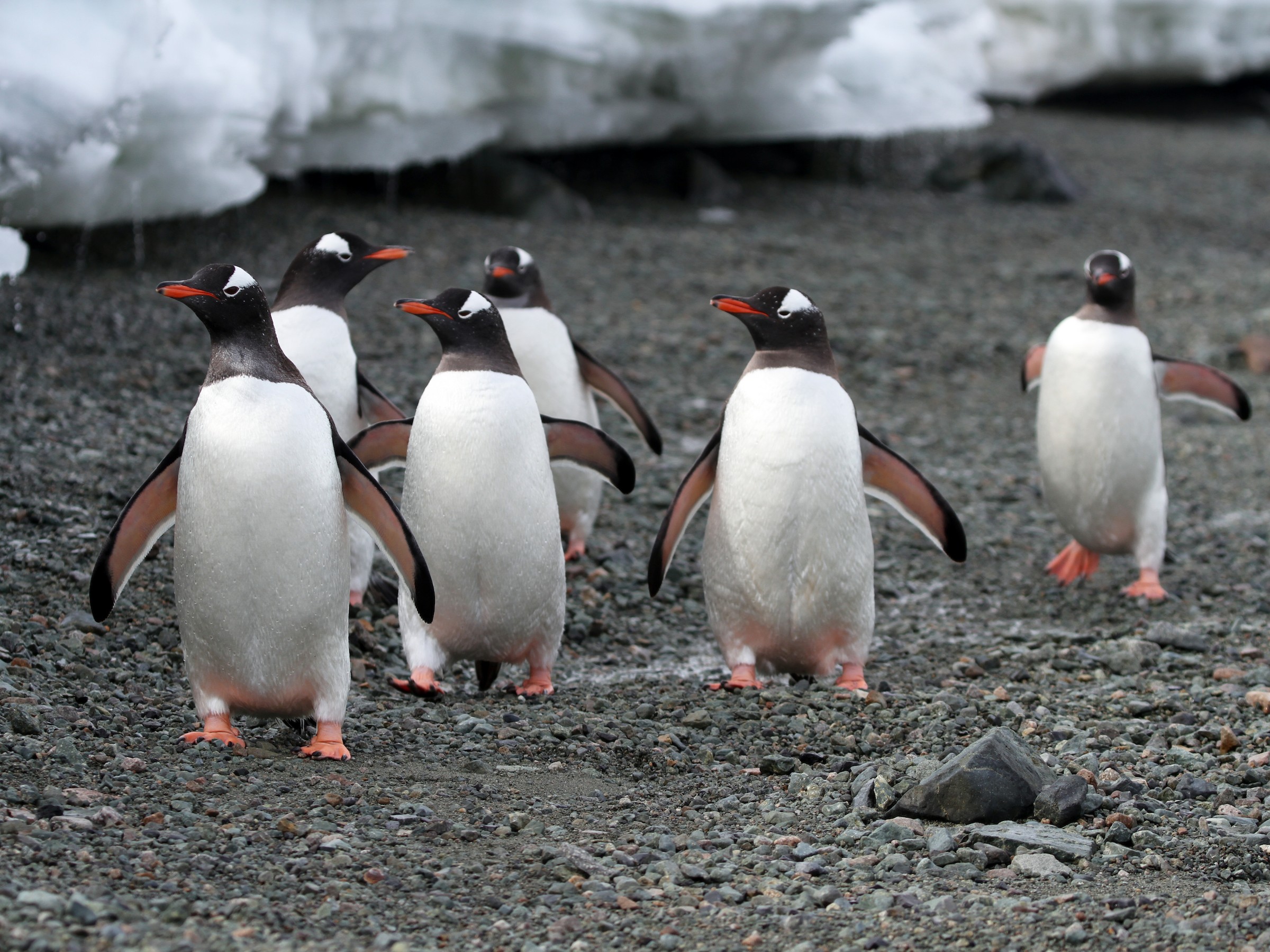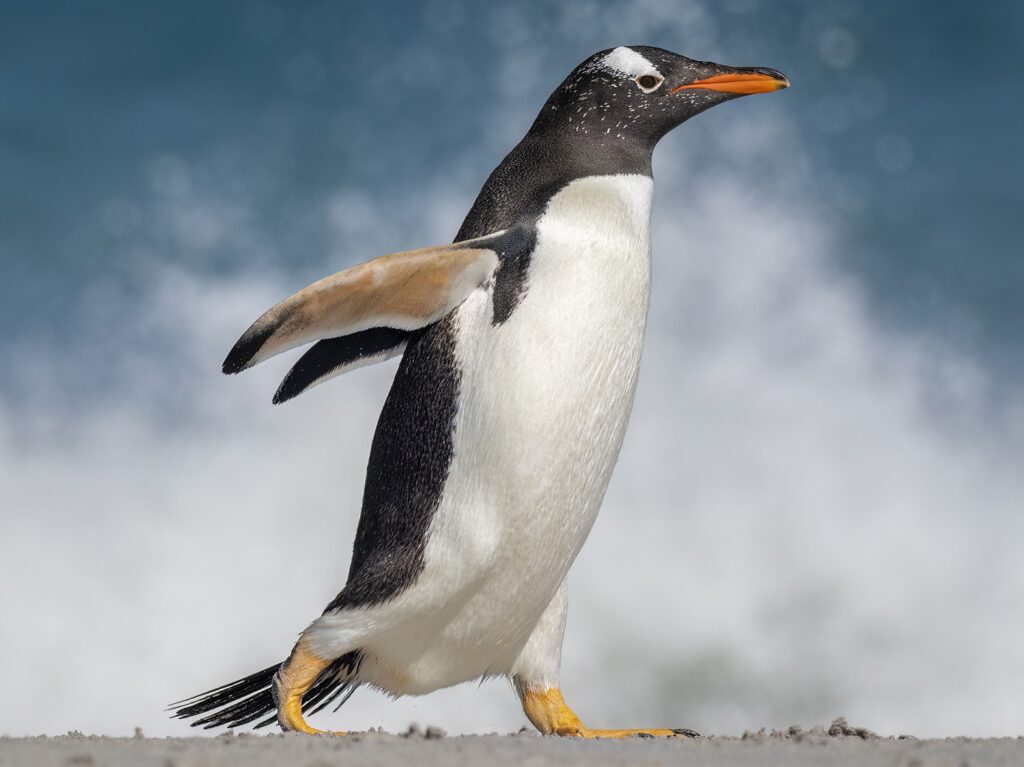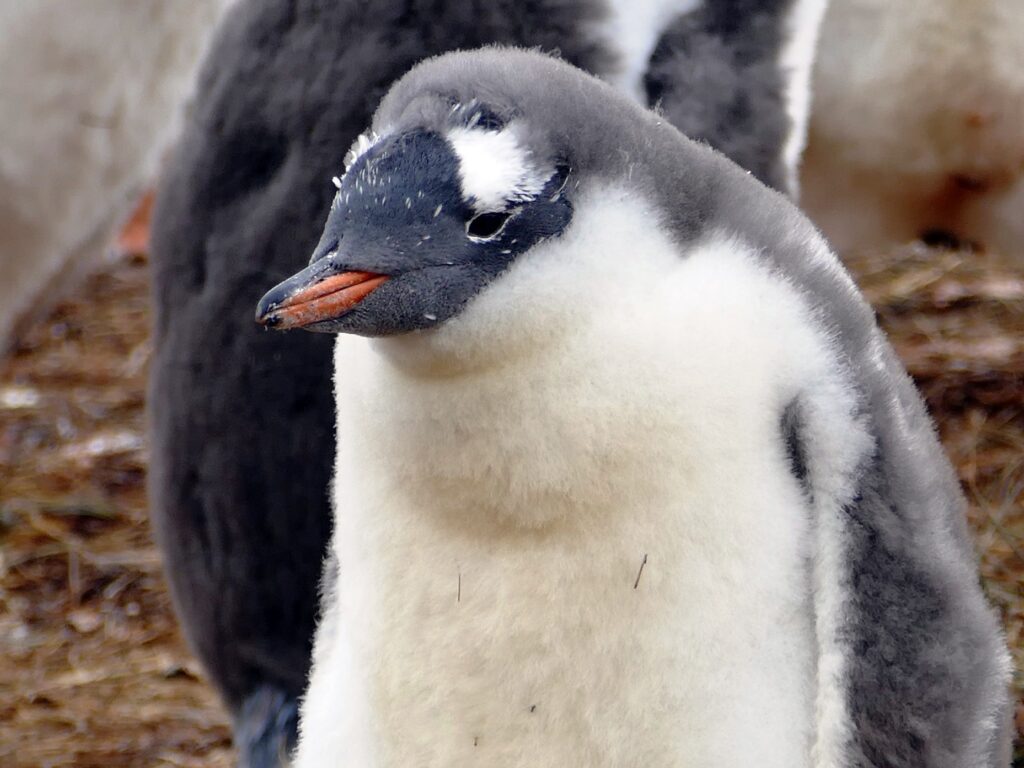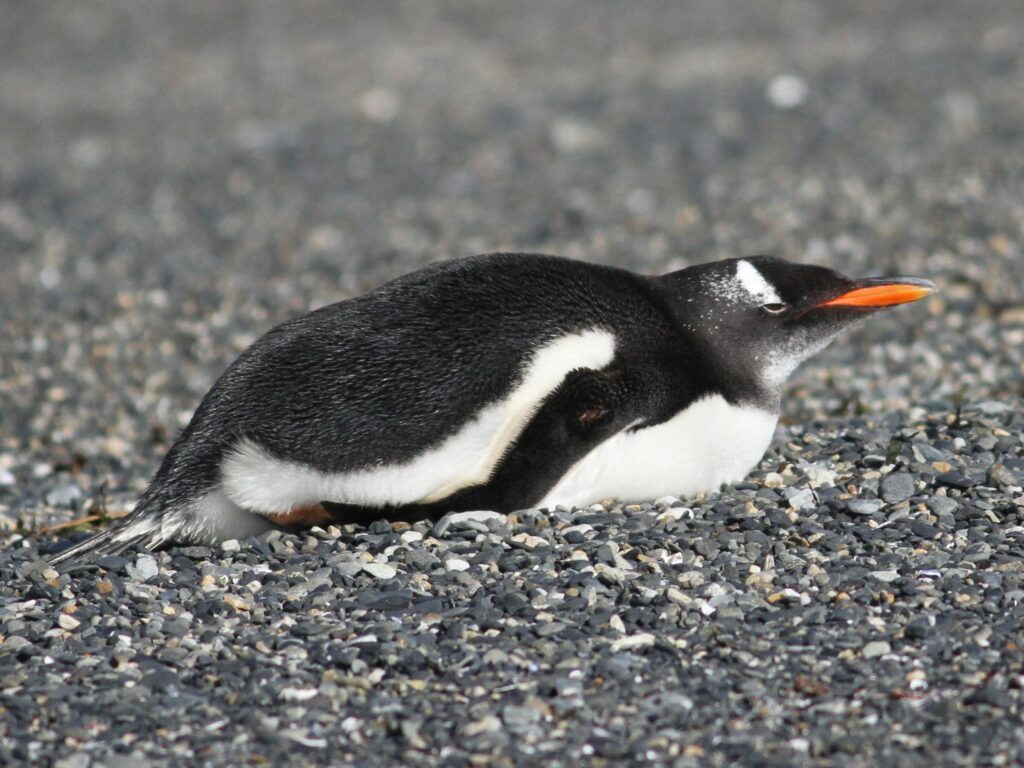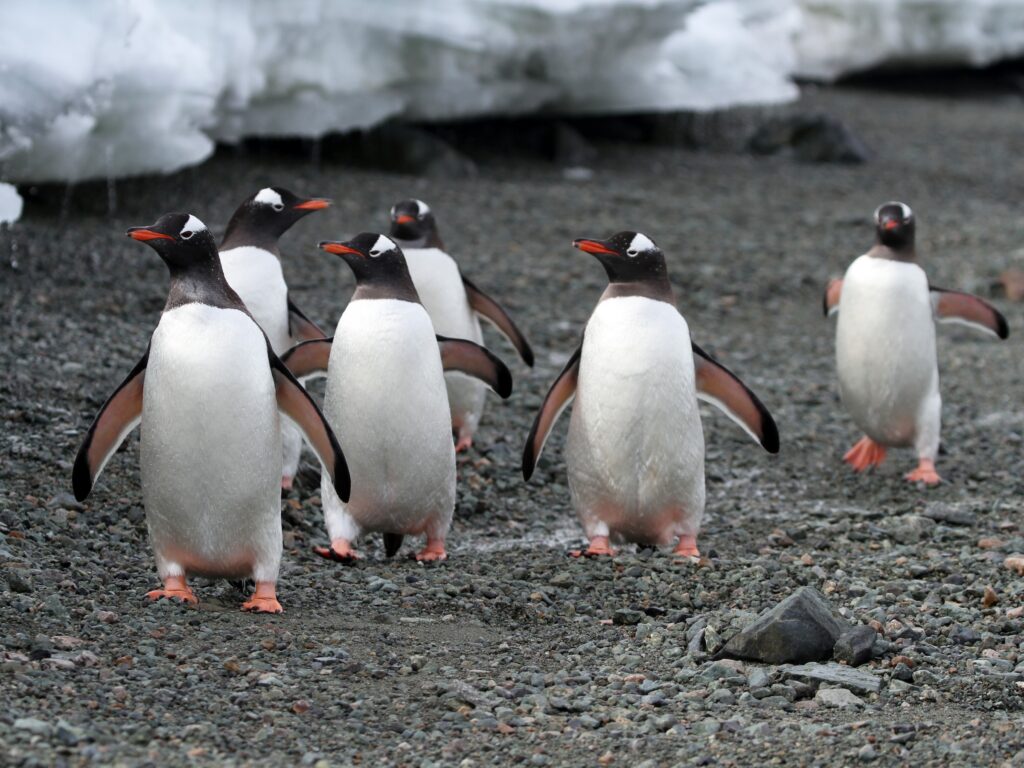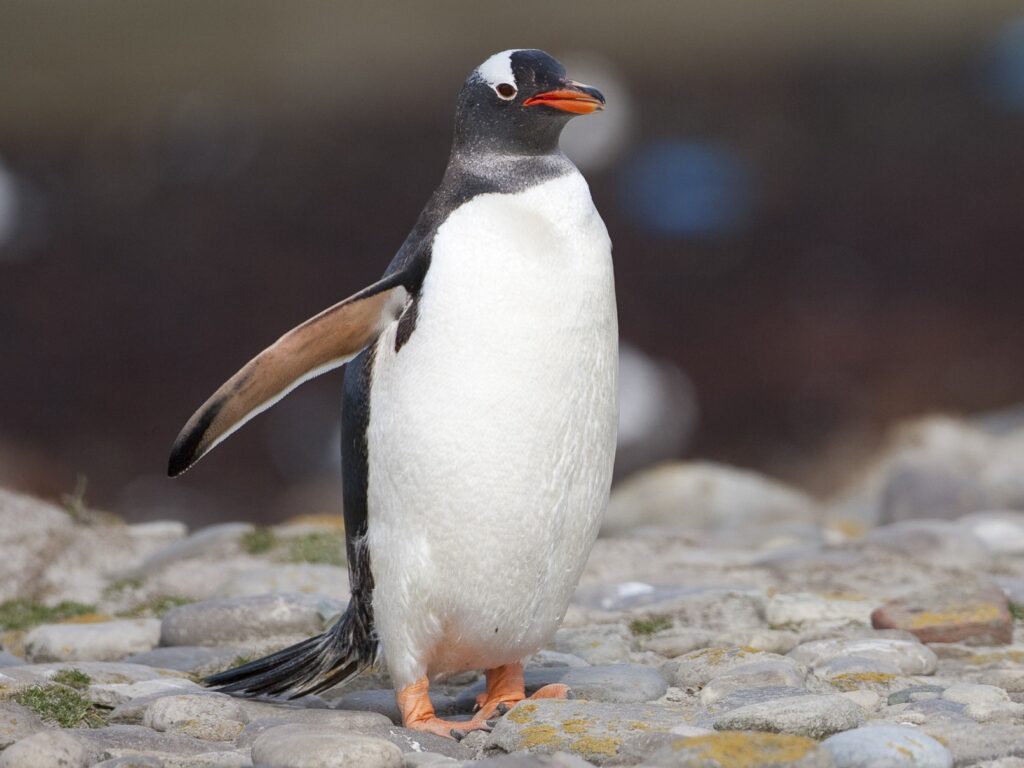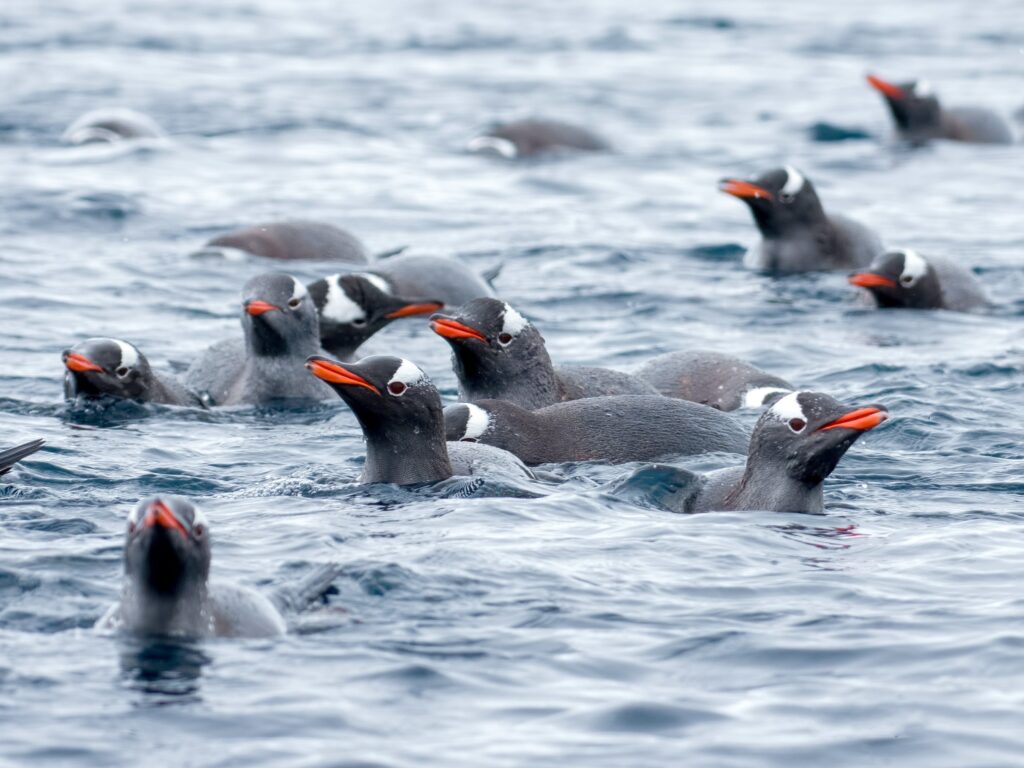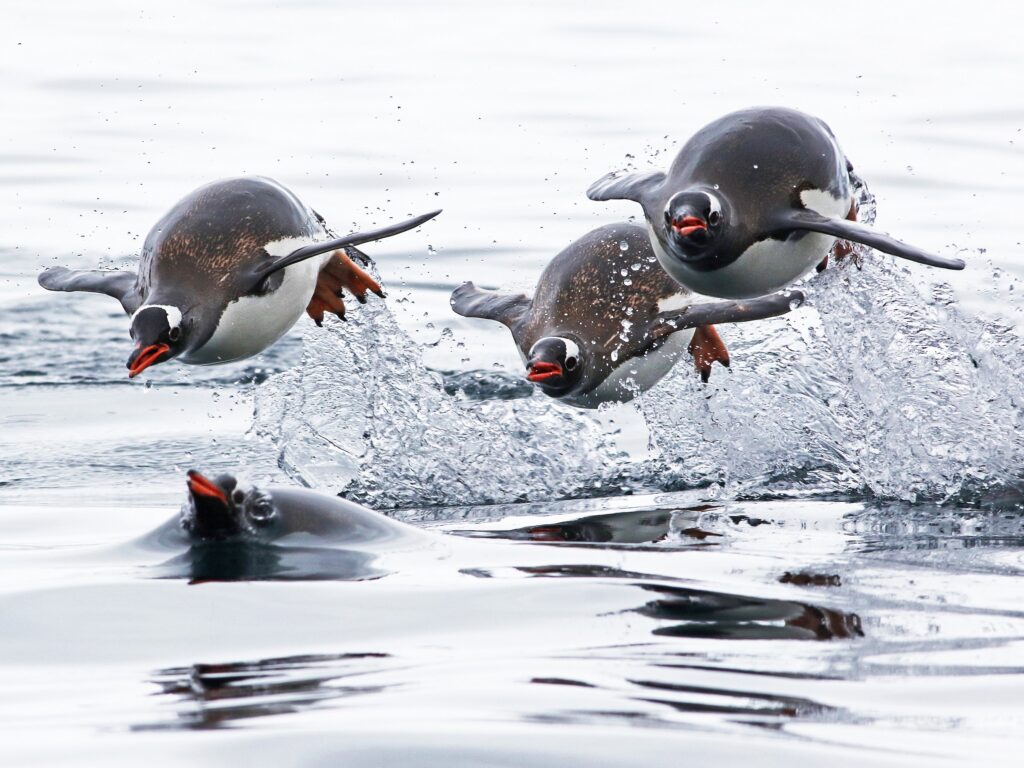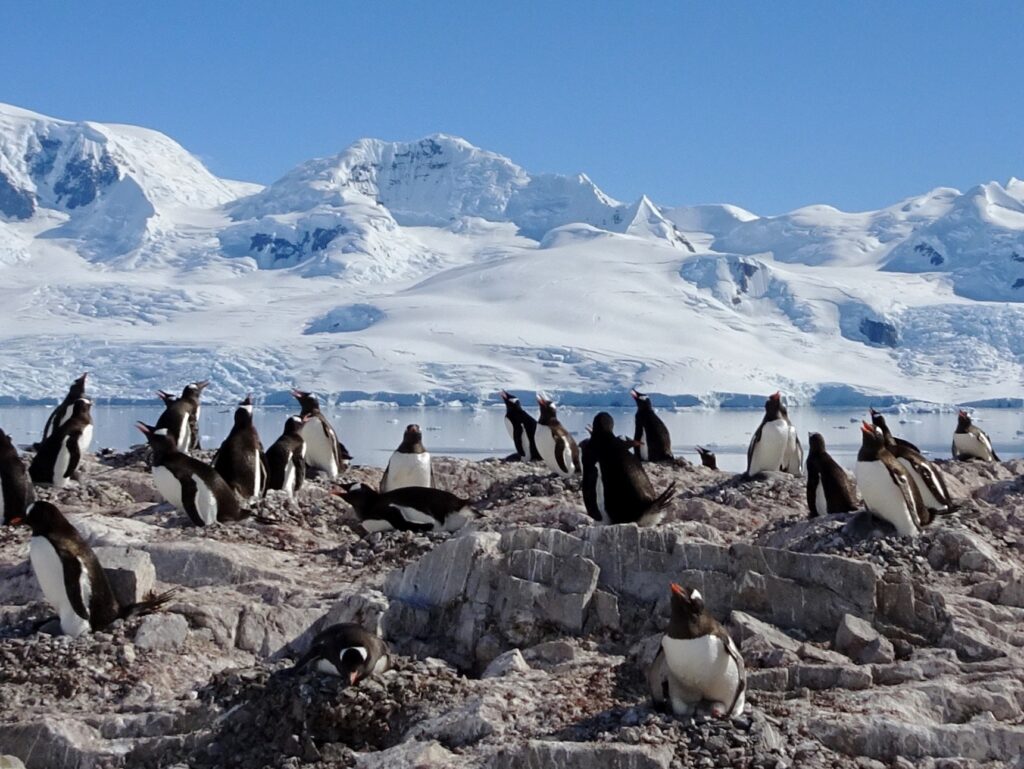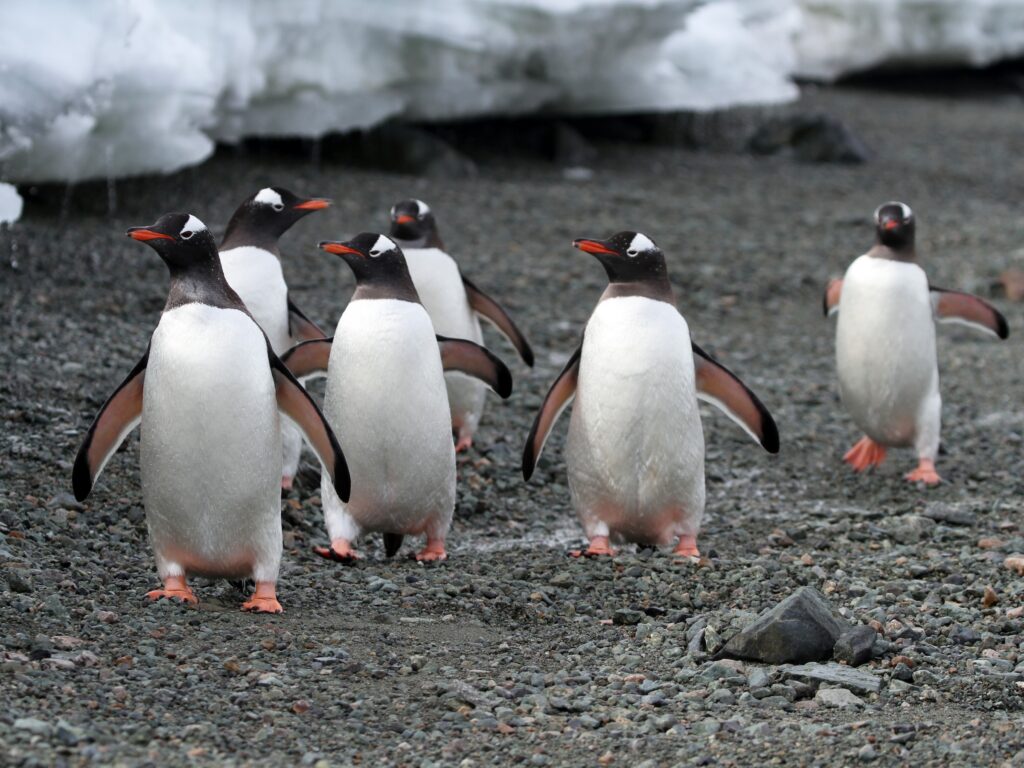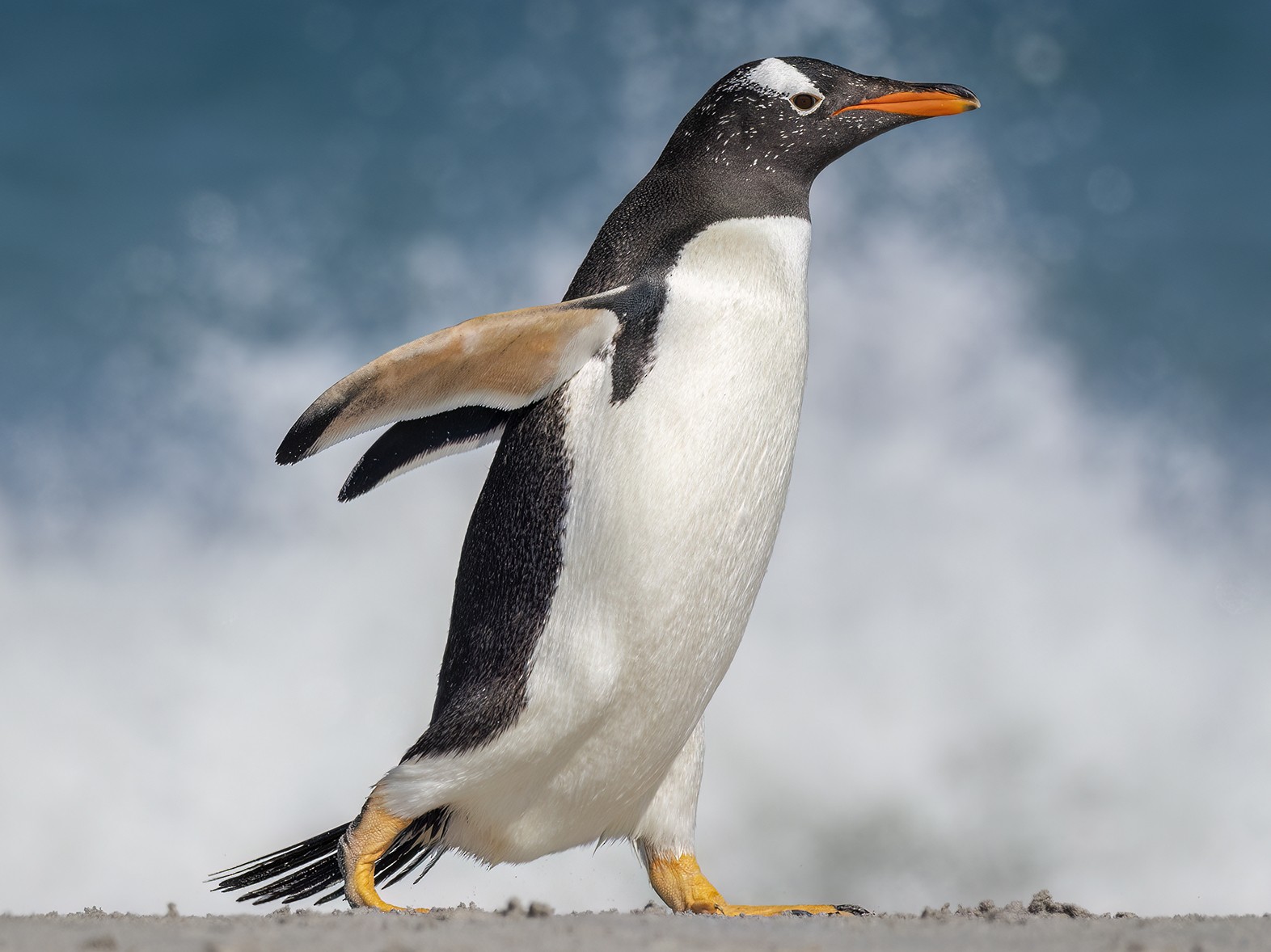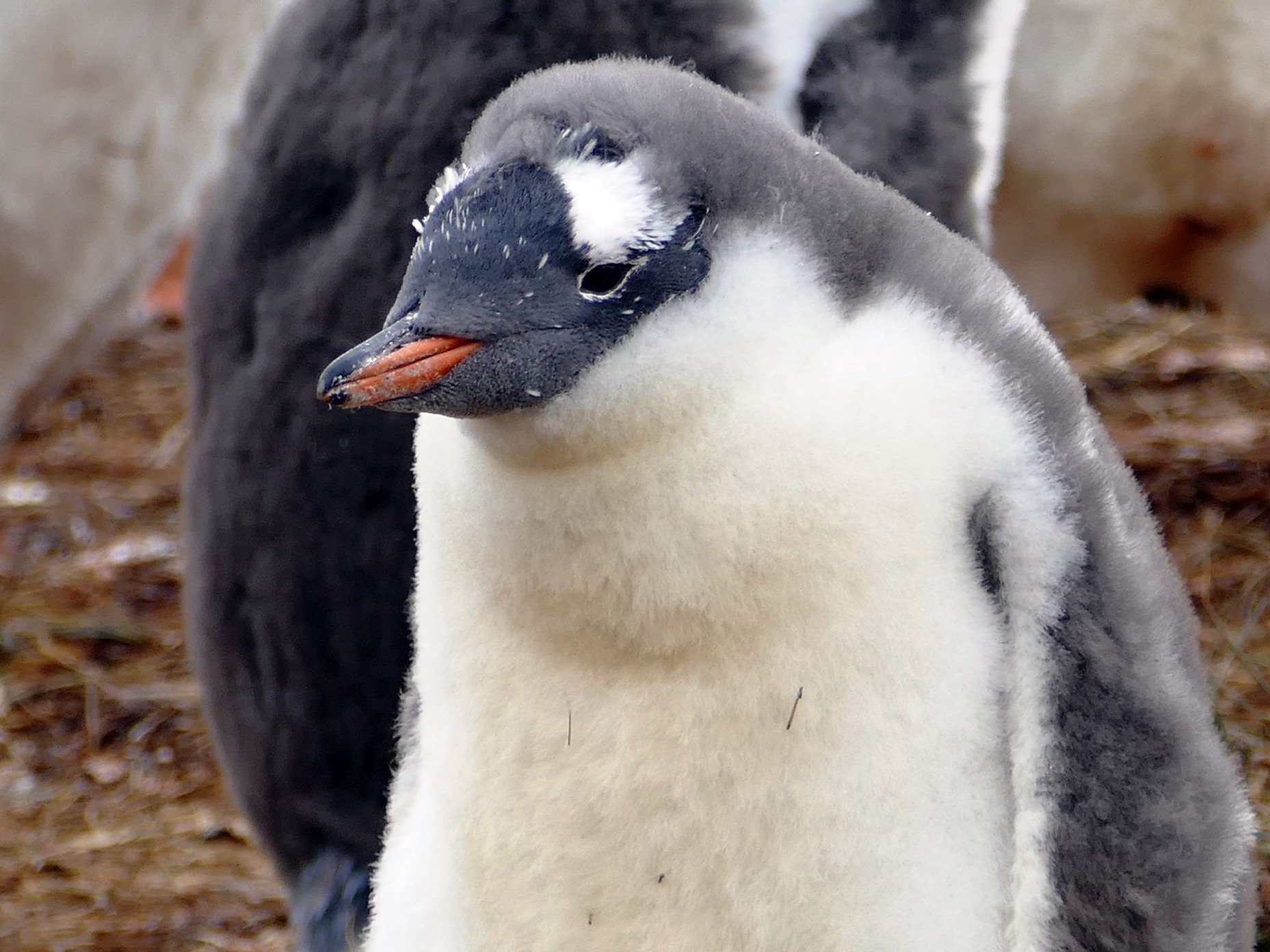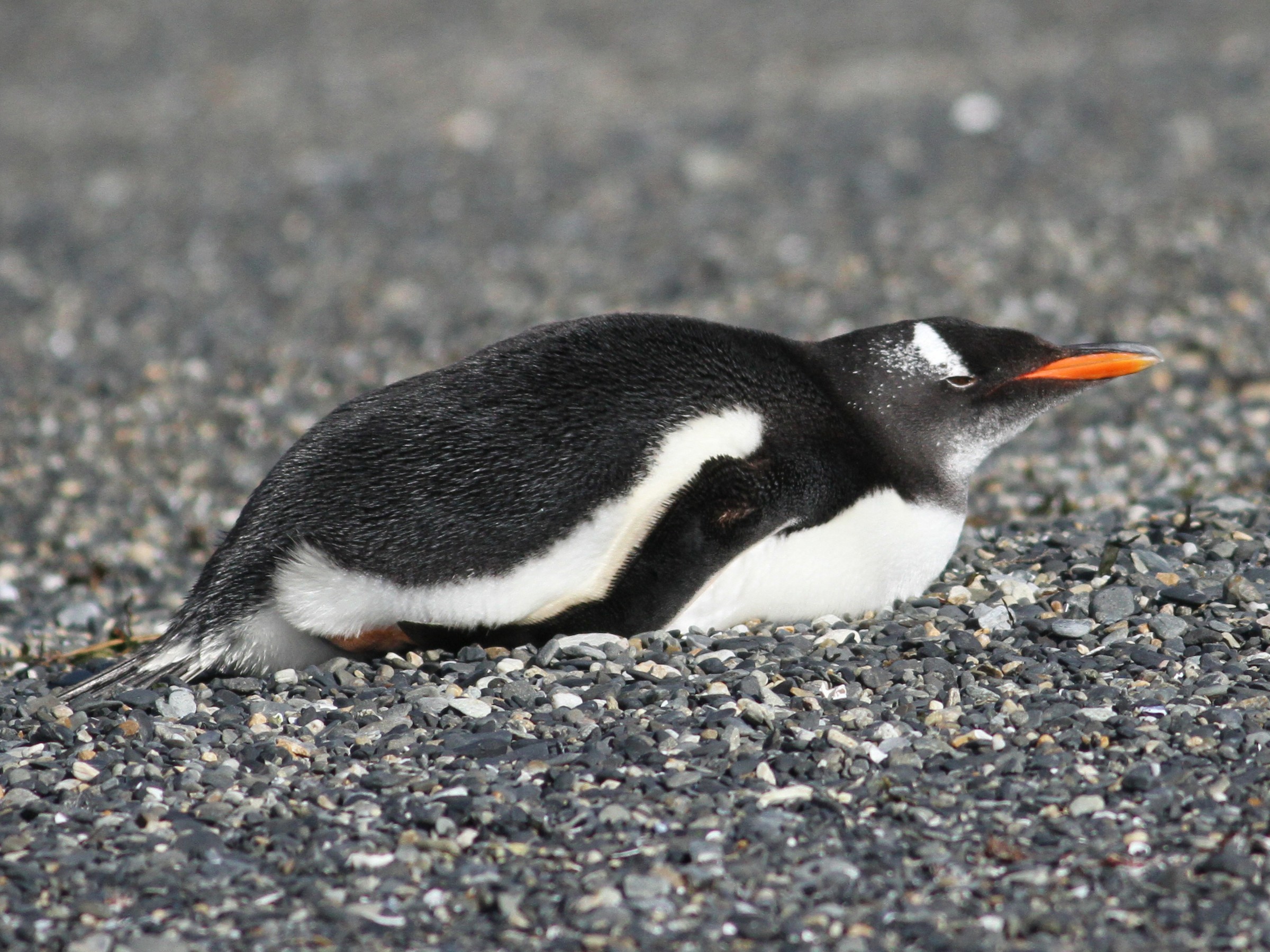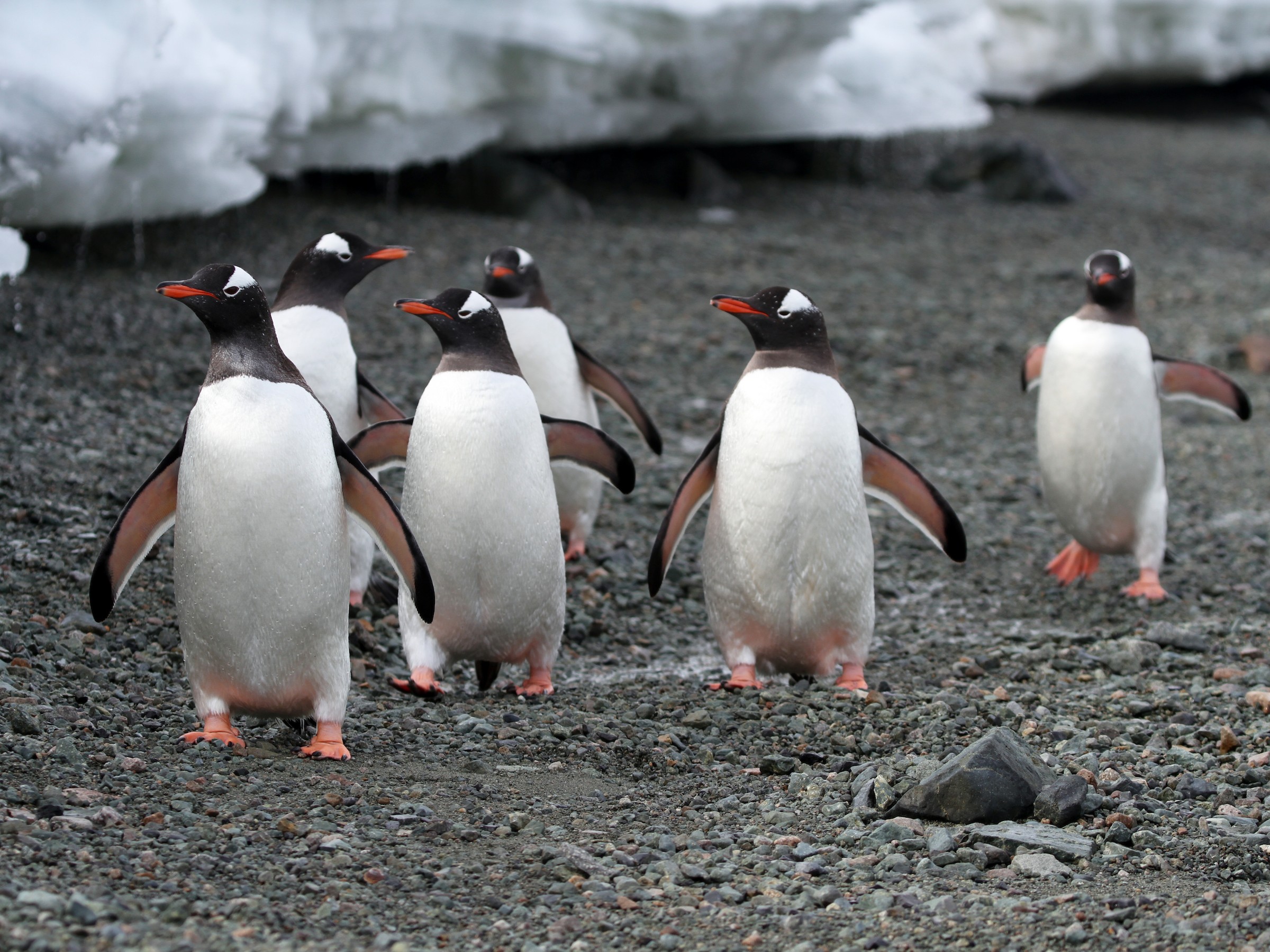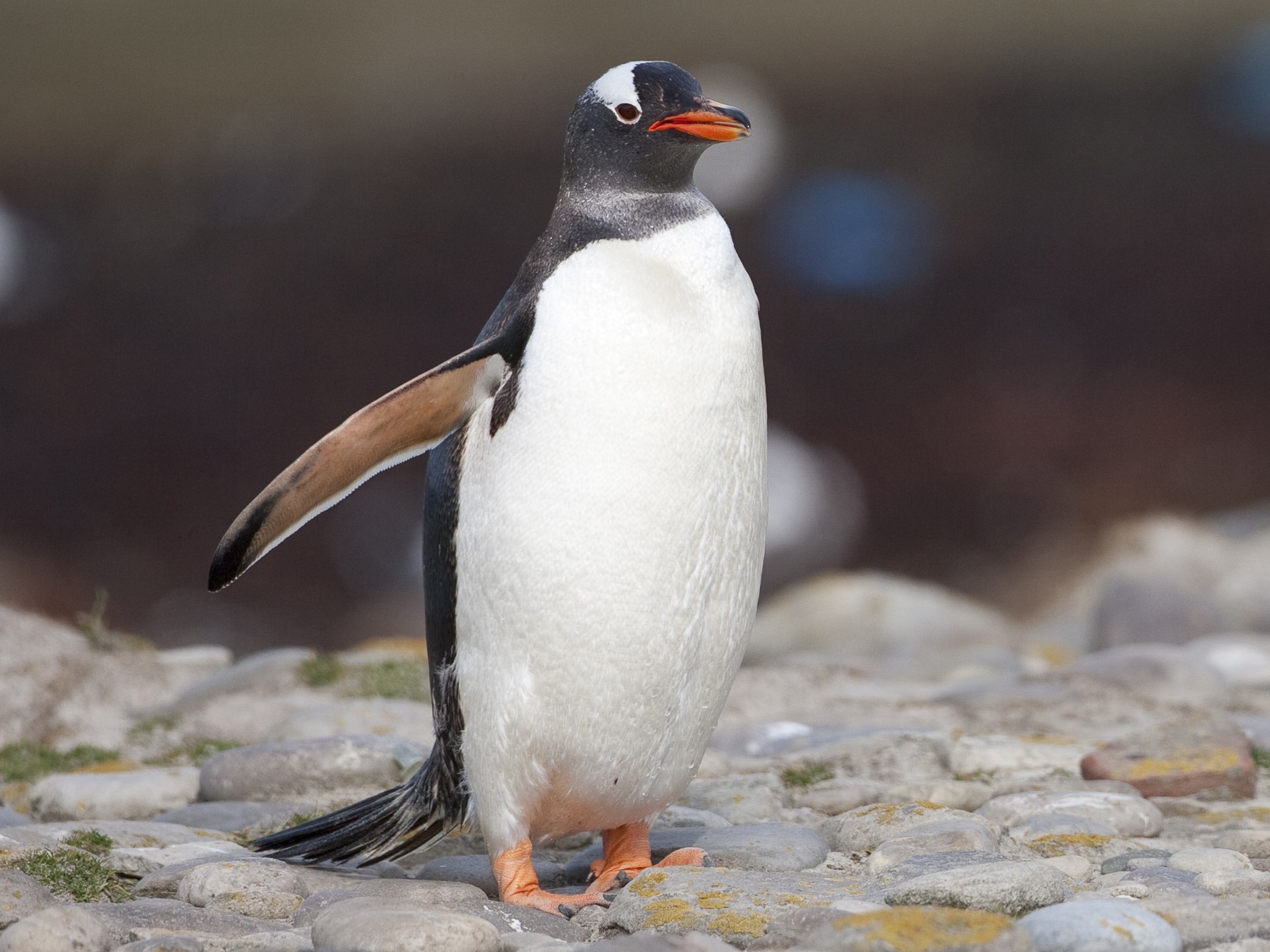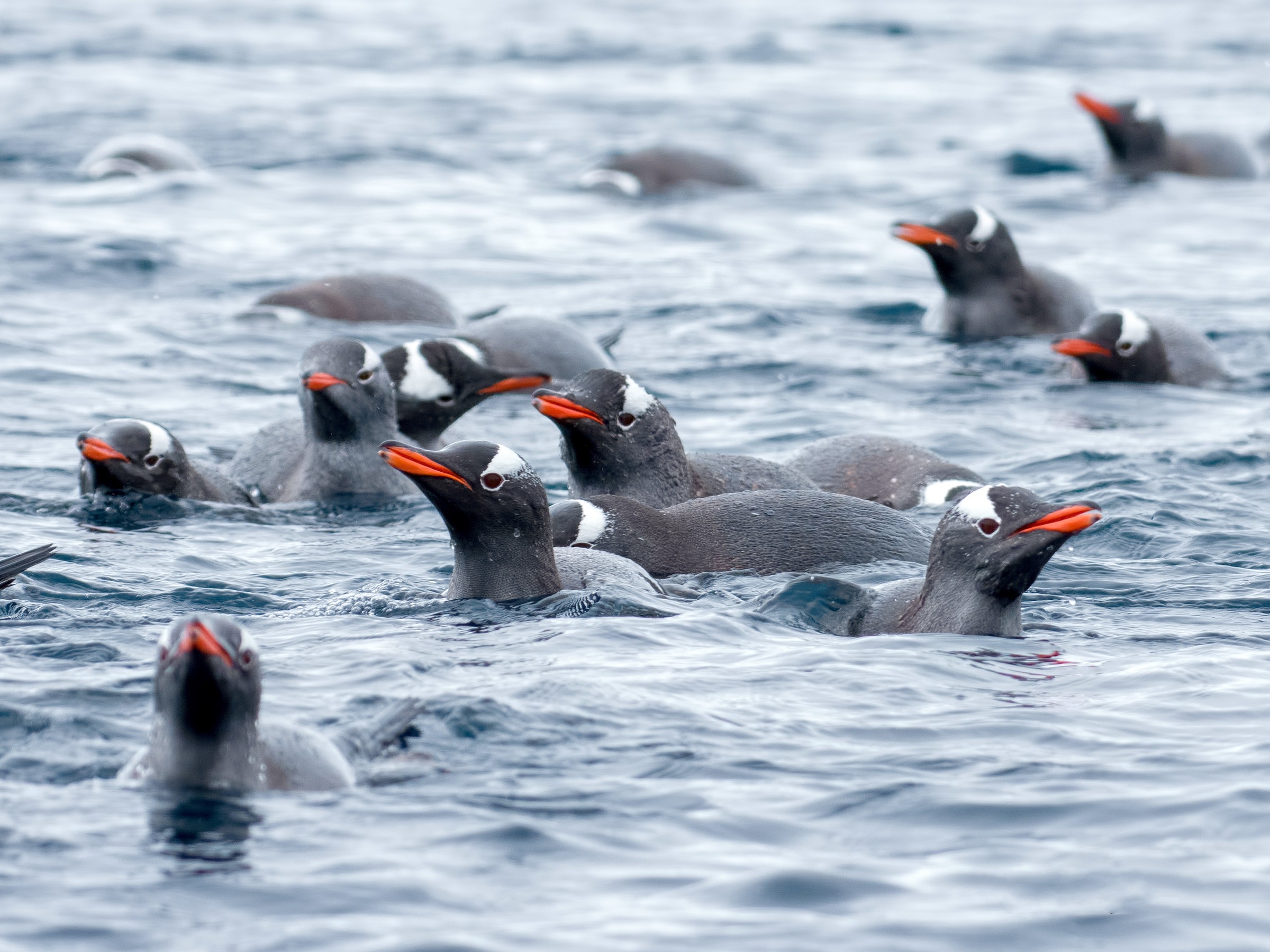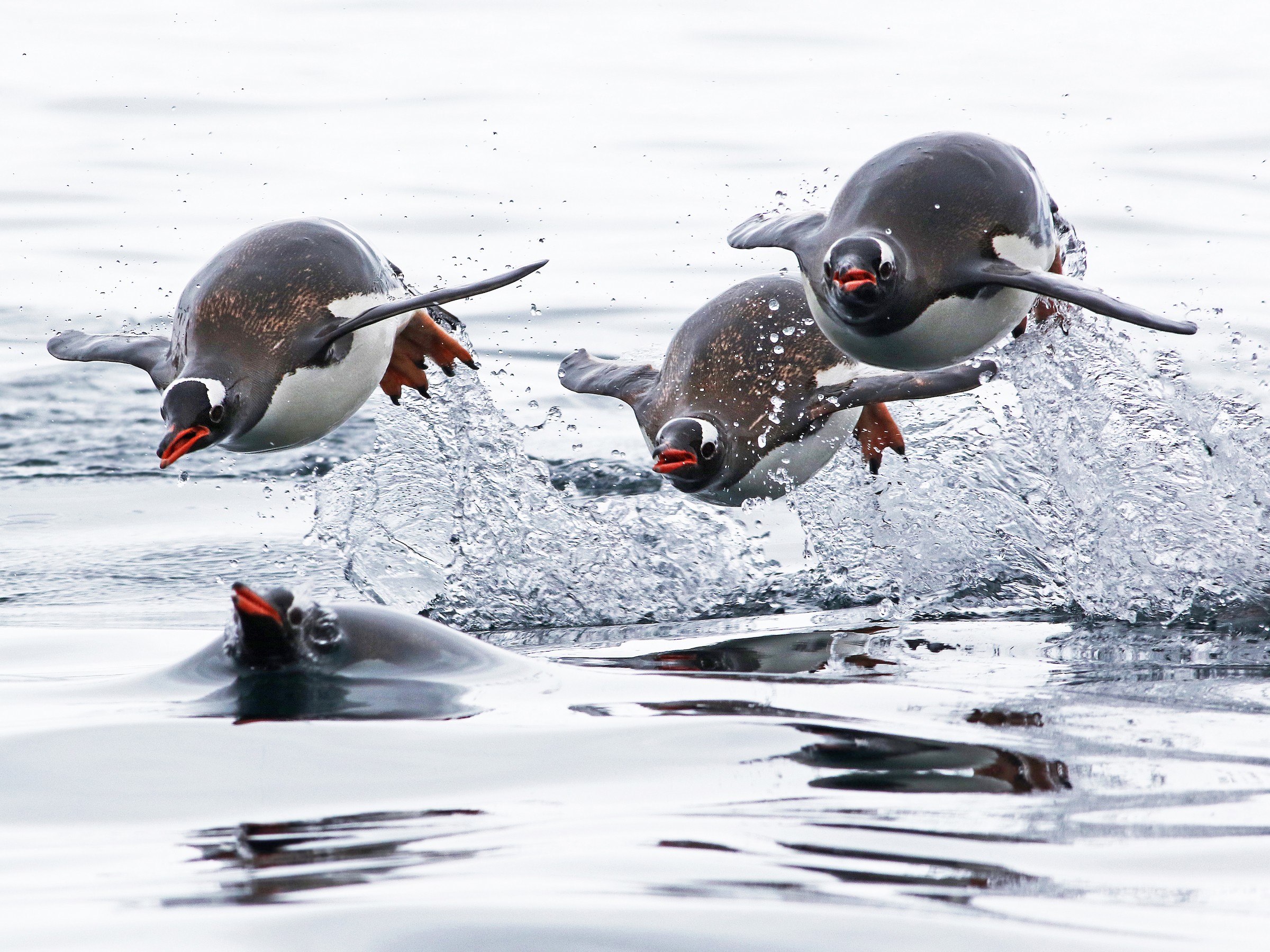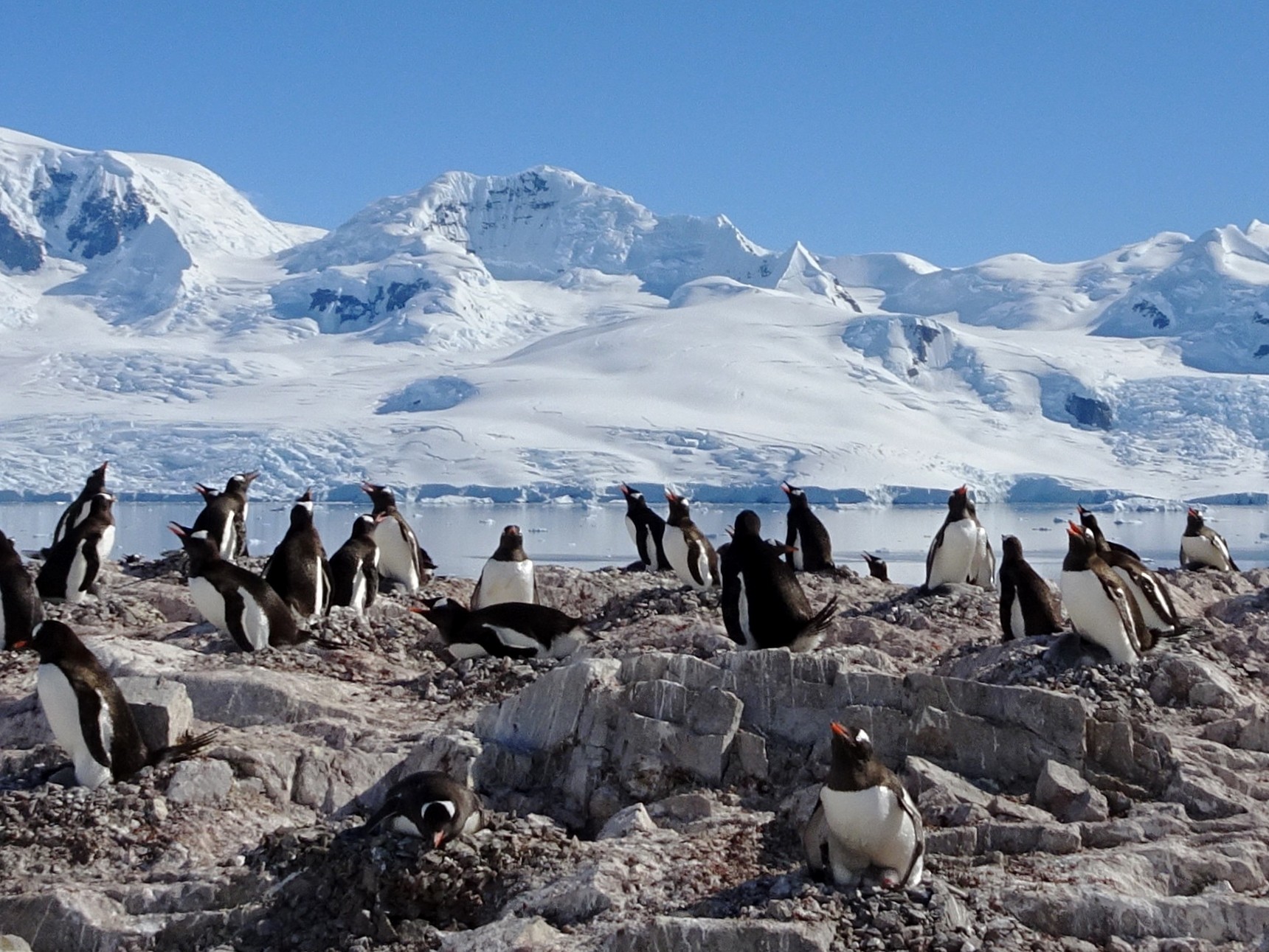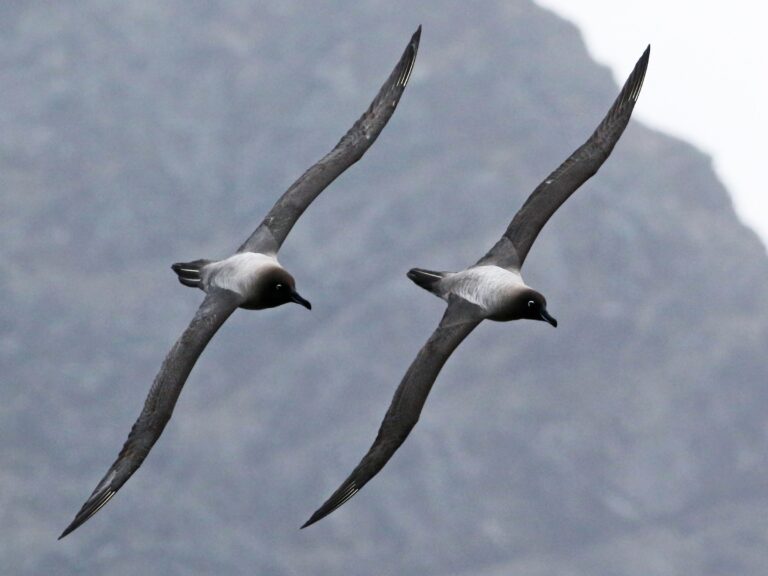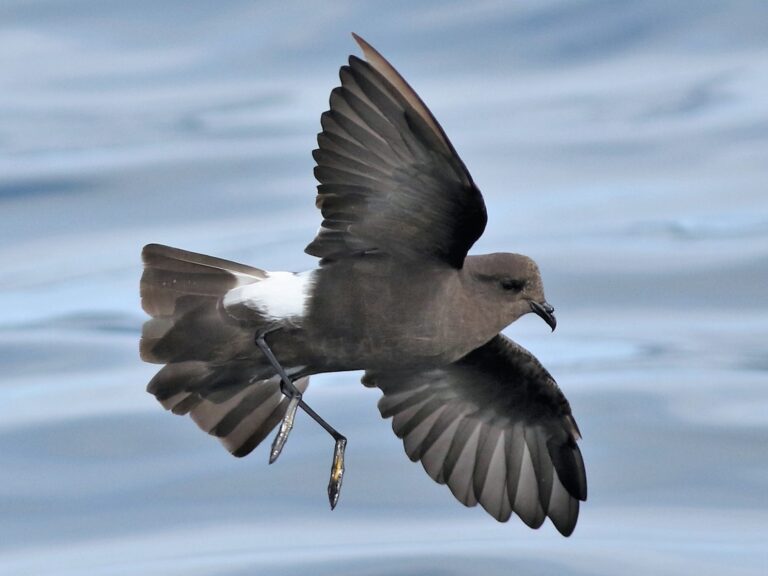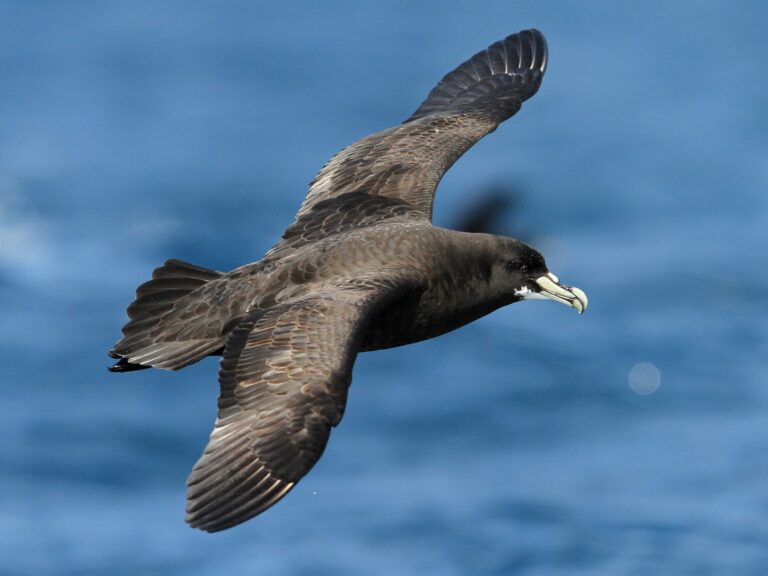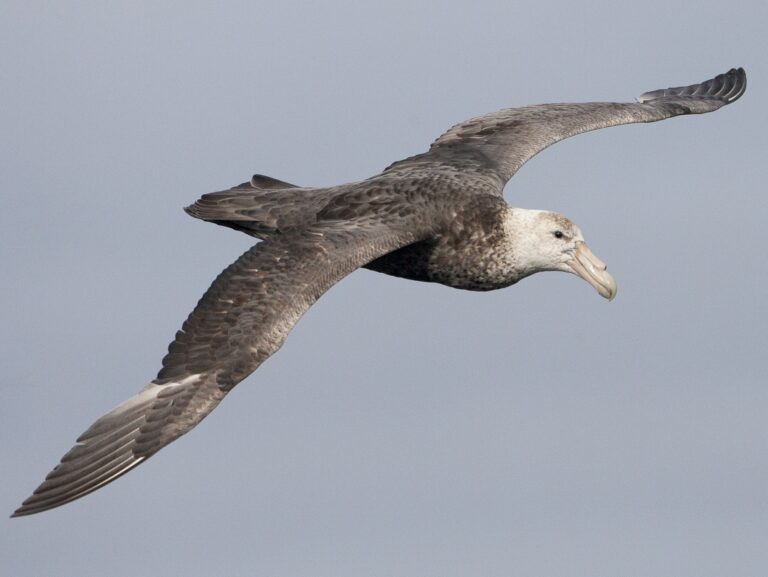Gentoo Penguin: The Thriving Jewel of the Antarctic Seas
Gentoo penguins are one of the most fascinating species of the Antarctic, easily recognized by their bright orange beaks and distinctive white stripe over their eyes. These penguins, known scientifically as Pygoscelis papua, thrive primarily on the Antarctic Peninsula and surrounding islands, making them a key species in this unique ecosystem. Their adaptability, intriguing behaviors and vocalizations not only capture the interest of scientists but also of wildlife enthusiasts around the world.
Living in large colonies, Gentoo penguins exhibit strong social behaviors and are known for their playful nature. They primarily feed on krill and fish, which are abundant in their cold-water habitat. As they navigate the challenges posed by climate change and human activity, understanding their reproductive patterns and conservation status becomes crucial for their survival.
The Gentoo penguin’s resilience and clever adaptations continue to be a rich area of study. Their population has shown encouraging trends in some areas, but ongoing efforts are needed to ensure they can continue to thrive in a changing world.
Key Takeaways
- Gentoo penguins are known for their unique color patterns and lively behaviors.
- They mainly inhabit the Antarctic Peninsula and feed on krill and fish.
- Their population is growing in some regions, highlighting the need for continued conservation efforts.
Physical Description
Gentoo penguins are notable for their unique physical features that distinguish them from other penguin species. Their size and color play a significant role in their identification and understanding.
Size and Weight
Gentoo penguins are among the larger penguin species. They typically reach a height of 30 to 35 inches (76 to 89 cm) from beak to toe.
An adult Gentoo penguin usually weighs between 11 to 19 pounds (5 to 8.5 kg). Males are generally larger than females, which is common in many penguin species.
This size advantage helps them navigate their icy habitats and dive for food. They can dive to depths of over 600 feet (183 meters) while foraging.
Their robust build aids in swimming and provides insulation against the cold Antarctic waters.
Color and Markings
Gentoo penguins have striking color patterns. Their bodies are primarily black on the back and white on the belly.
One of their most recognizable features is the bright orange-red bill that adds to their vivid appearance.
They also have a distinctive white stripe that runs across their heads, giving them a unique look compared to other penguin species.
The juveniles have grayish plumage and gradually develop the adults’ coloration. This coloration plays a role in camouflage against predators while swimming in the ocean.
Gentoo penguins’ coloring is not only beautiful but also serves important functions in their environment.
Habitat and Distribution
Gentoo Penguins thrive in various habitats across multiple regions. Their geographical range extends to several islands in the Southern Hemisphere, mostly around Antarctica. Key factors such as sea ice extent and food availability influence their distribution.
Geographical Range
Gentoo Penguins are primarily found in the sub-Antarctic and Antarctic regions. Their range includes:
- Antarctic Peninsula
- South Georgia
- Falkland Islands
- Kerguelen Islands
- South Shetland Islands
- Macquarie Islands
These areas provide suitable conditions for breeding and foraging. The penguins prefer coastal habitats with rocky shorelines. They are often seen nesting in colonies on windswept shores and island cliffs. Seasonal migration patterns are observed as they search for food during winter.
Island Populations
Island populations of Gentoo Penguins exhibit unique traits based on their location. For instance:
- South Georgia hosts dense colonies due to rich marine ecosystems.
- Falkland Islands show variations in breeding success linked to food availability.
- Kerguelen Islands are more remote, influencing population density.
These islands provide critical breeding grounds with optimal conditions, supporting diverse ecosystems. Penguins depend on these habitats for raising chicks and finding food, like krill and fish. Changes in climate and ice patterns can impact these island ecosystems, which is significant for their future.
Diet and Feeding Habits
Gentoo penguins have a diverse diet and unique feeding habits that allow them to thrive in their environments. Their primary food sources mainly consist of marine organisms, which they hunt skillfully.
Primary Food Sources
Gentoo penguins primarily feed on Antarctic krill (Euphausia superba), which forms a major part of their diet. In addition to krill, they consume various fish species, including smelts and other small schooling fish.
Crustaceans also play a significant role, with their flexible diet allowing them to adapt based on seasonal availability. During breeding and molting seasons, gentoo penguins may shift their eating habits to include more squid. This adaptability helps them maintain their energy levels throughout the year.
Feeding Techniques
When feeding, gentoo penguins employ several effective techniques. They are known for their diving abilities, diving up to 200 meters to catch prey. Their streamlined bodies help them move swiftly underwater.
They typically hunt alone or in small groups, targeting schools of fish or swarms of krill. Using their keen eyesight, they spot prey from a distance. Furthermore, gentoo penguins have specialized bills that allow them to grasp slippery prey like squid and fish easily.
These feeding habits ensure that they can find enough food even in harsh conditions, supporting their energetic lifestyle.
Reproduction and Lifecycle
Gentoo penguins have a well-defined breeding season, unique nesting behaviors, and attentive parental care. Understanding these aspects is key to appreciating their lifecycle and conservation status.
Breeding Season
Gentoo penguins typically breed from late October to early February. This season is influenced by environmental factors, as they prefer to nest when the weather is milder. Mating pairs engage in a courtship display, which includes mutual preening and vocalizations.
After forming a pair bond, they will find a suitable nesting site, usually near the coast. The male is often responsible for gathering materials to build the nest. Their breeding success plays a crucial role in the conservation of the species, as populations can be affected by environmental changes and predation.
Nesting Behaviors
Gentoo penguins build their nests primarily from pebbles and nesting material found nearby. The male collects and presents pebbles to the female, who selects the best ones for their nest. They typically create a circular structure on the ground.
Once the nest is established, the female lays two eggs, usually within a few days. The eggs are incubated for about 34 to 36 days. Both parents share incubating duties, which is critical in ensuring the eggs receive adequate warmth and protection from predators.
Parental Care and Chick Development
After hatching, the chicks are covered in down feathers and are highly dependent on their parents for food and warmth. Both parents take turns foraging for food and feeding the chicks regurgitated fish.
Chicks remain in the nest for about three to four weeks, after which they join a group called a crèche. This social structure provides safety in numbers as they learn to hunt and swim. The fledging process starts at about 3 months, marking their gradual independence from parental care.
Conservation efforts are vital during this time, as threats from climate change and habitat loss can impact their survival and development.
Behavioral Traits
Gentoo penguins display a range of interesting behavioral traits. Their social structure, communication methods, and migration patterns highlight their adaptability and unique personality as a species.
Social Structure
Gentoo penguins are known for their strong social bonds. They typically live in large colonies, which can number in the thousands. These colonies provide safety in numbers against predators such as leopard seals and skuas.
Within these groups, they have established hierarchies. Dominant individuals may engage in displays of aggression, such as vocalizations and posturing, to assert their status. Gentoo penguins are also seen of waddling in groups, which helps reinforce social connections and collective movement.
Vocalizations and Sounds
Communication among gentoo penguins is vital for their social structure. They use various vocalizations to convey messages. These sounds include braying, which can signal alarm or distress.
Gentoo penguins can be quite vocal during their breeding season. Males often use distinct calls to attract mates or defend their territory. Their vocal sounds vary in frequency and intensity, allowing them to communicate effectively despite the noisy environment of large colonies.
Migration Patterns
Migration patterns of gentoo penguins depend largely on their breeding and feeding needs. During the breeding season, they stay close to their nesting sites. This behavior ensures that they can care for their young and maintain their colonies.
In winter, gentoo penguins may travel further to find food. They are excellent swimmers, which allows them to navigate icy waters while foraging for krill, fish, and other marine life. Their ability to swim long distances and adapt to changing environmental conditions helps them survive despite potential challenges from predators like sea lions.
Conservation Status
The gentoo penguin (Pygoscelis papua) is currently classified as “Least Concern” by the International Union for Conservation of Nature (IUCN). While this status suggests that they are not immediately at risk, localized threats exist.
Gentoo penguins have several populations, including the well-known P. P. papua and P. P. ellipticus. Each population faces unique threats based on its habitat. The primary threats include climate change, habitat destruction, and human activities.
- Climate Change: Altered ocean temperatures affect the availability of food sources, impacting penguin feeding habits.
- Habitat Destruction: Human activities, such as tourism, can disturb nesting sites and breeding success.
- Predation: Introduced species can pose a significant threat to penguin eggs and chicks.
Conservation efforts are vital to ensure the gentoo penguin’s continued survival. These efforts include monitoring populations, protecting breeding sites, and educating the public about the species’ needs.
Research indicates that the population trends of gentoo penguins can vary. For example, studies on Macquarie Island show different dynamics compared to those in the Antarctic Peninsula. This highlights the importance of targeted conservation strategies for each population.
Continued research and conservation action will be essential to safeguard the future of gentoo penguins in changing environments.
Frequently Asked Questions
Gentoo penguins have specific dietary habits, lifespan, and habitat preferences. Understanding these aspects, along with their distinctive features and the threats they face, provides insight into their life and environment.
What is the typical diet of a gentoo penguin?
Gentoo penguins primarily eat a diet of krill, fish, and squid. They hunt in the waters surrounding their breeding colonies. This diet varies slightly based on seasonal availability.
How long do gentoo penguins typically live?
In the wild, gentoo penguins usually live around 15 to 20 years. Some individuals may live longer, particularly in protected environments where they face fewer dangers.
What are the main threats to the gentoo penguin population?
Gentoo penguins face several threats, including climate change, habitat destruction, and overfishing. Changes in sea temperature can affect their food supply, impacting their population numbers.
Can you describe the habitat of gentoo penguins?
Gentoo penguins inhabit sub-Antarctic and Antarctic regions. They prefer rocky shorelines and islands where they can breed and raise their young safely away from predators.
How large can gentoo penguins grow, including their height and weight?
Gentoo penguins are among the larger species of penguins. They can grow up to 75 centimeters tall and weigh between 4 to 8 kilograms, depending on their sex and environmental conditions.
What are some distinctive features of gentoo penguins compared to other penguins?
Gentoo penguins are easily recognized by their bright orange beaks and distinctive white stripe across their heads. These features set them apart from other penguin species, making them a favorite among observers.
